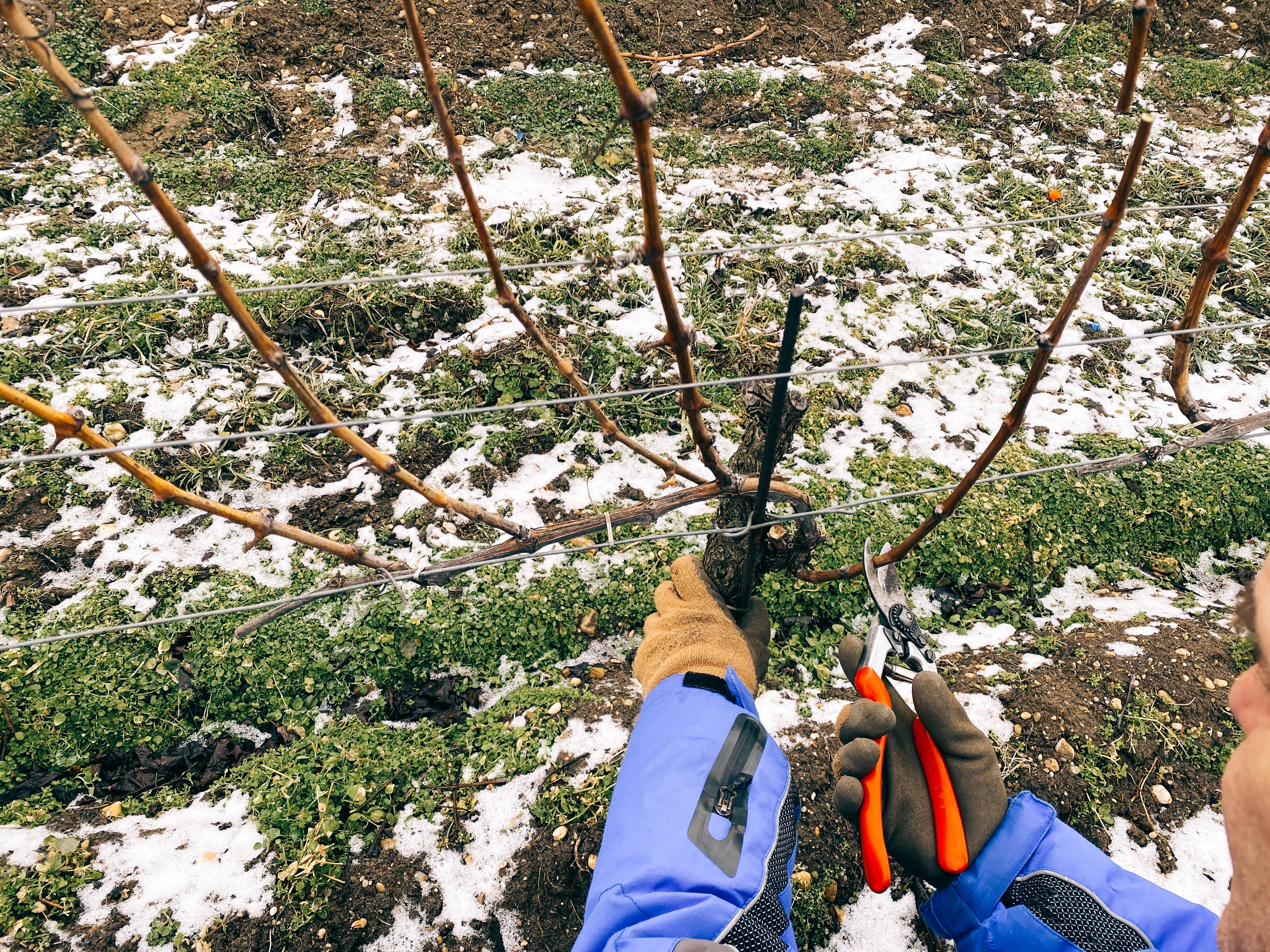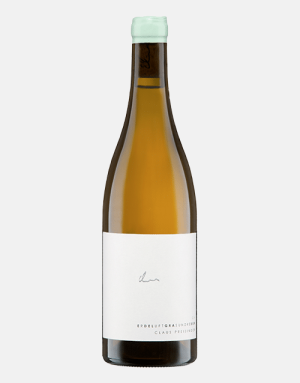
Updates from the Vineyard - Pruning with Claus Preisinger
How are you with pruning, Claus?
Claus Preisinger's Puszta Libre is in our glasses. But how did it get there? What work had to be done so that we can enjoy this wine?
In the fall after the harvest, you leave the vineyard alone for a few months and give it time to regenerate. And then? Then comes the pruning! We have talked to Claus Preisinger talked to. Ready?

Want more updates from the vineyard? Jonas Brand told us about the Green work harvest and with Piri we have talked about the Harvest of the grapes.
Pruning, what?
Pruning is the first step in the so-called vegetative cycle. But what does that mean anyway? Claus has broken it down to one sentence for us:
"Pruning is the cutting back of one year old wood and at the same time caring for the quality and yield for the next year and the next harvest."
So far so good, oh yeah, and "annual wood" is winemaker jargon for the shoots that grew last year and lignified over the winter. So from green to wood, so to speak. But how exactly does that work now? No need to worry, we asked Claus a few questions.
Gentle pruning
Pruning, but make it gentle
This comes from the idea of pruning the vines with minimal soreness to ensure that the sap pathways in the vine do not dry out. The Preparatori d'Uvi - Simont & Sirch have been working on the subject since the 80's and share their knowledge with winemakers all over the world, they are more or less the reason that this practice is so widespread today.
8gb: Claus, how would you explain gentle pruning?
Claus: "With gentle pruning, you always keep an eye on the flow of sap and make sure that you don't lump the vineyard together, but look at each vine individually. That means I stand in front of it and look at it: What happened last year? How many shoots did it have? How is the wood quality? Is it in sap? Then I can let the vine have more buds. Or does it only have 3 half shoots, in which case I'd better cut it back a year, even foregoing a yield completely, but then I'll have two healthy shoots the following year, which I can then build on for the future."
8gb: So that means you look at each floor individually and then decide?
"Exactly, and I then ask: What was this year? How was the growth? Was it good, was it bad? And from that I then decide, can I leave it four, six or ten buds."
8gb: And this is based on the findings of Simonit & Sirch?
Claus: "What Simonit & Sirch found out is actually nothing new. They asked themselves why these bush wines, these old vines in southern Italy, France or Catalonia have become so old - that is, almost 100 years old. And if you look at how they were raised, this "Alberello culture", where you have five buds at the top with one cone each - there has never been a cut into the old wood (older than three years)."
8gb: And does that coincide with what you learned earlier?
Claus: "I still learned in school that you cut back, no matter what happens and how big the wound is, and with the saw for all I care. But what happens when you do that? If you take a tree, for example a walnut tree, and you cut a branch, then a wound healing happens, so the tree can close the wound again. The vine, if the wood is older than three years, it can't close the wound."
8gb: Interesting analogy...
"So that means if I were to cut my thumb away now, what happens then? It starts to dry up, and then at some point the entire sap pathways dry up, which doesn't stop. At some point, your whole hand will dry up. It's the same with the vine."
The right timing
When do we start?
As with so many steps in viticulture, pruning depends on the right timing. After the harvest, the vineyards are usually left alone for a few months, the grapes and wines are processed in the cellar, and we wait until the vine has completed the vintage and withdrawn all the juices.

8gb: When exactly can you start pruning, Claus?
Claus: "The vine, even if the leaves are already gone, has a shift of reserve substances back into the old wood, which you have to wait for. For me, the turn of the year is often the right time to start pruning.
However, it is rather crucial that it has frozen off properly once. That means you need two nights with -5 to -6 degrees, so to speak, that the vines then have properly completed the re-supply and then you can start pruning. Theoretically, you can also start pruning right after the harvest, but that's not exactly cool for the vine."
"I think the vines should be left alone for a while so that they can recover. For a while, it's also glad that it doesn't see anyone from us."
Are you wondering right now what pruning has to do with pet nats? Actually, nothing except that the timing of the two often coincides. Pet Nats are often disgorged in winter because the colder outside temperature makes disgorgement much easier.
3 Questions for Claus
8gb: How big is your pruning team?
Claus: "That's what my six permanent employees do for the outdoor area, the three guys from the cellar and me, so ten people. We do a warm-up training day every year with the Preparatori Uva, the company that teaches gentle pruning. They come for a day and cut with us to refresh the knowledge and then ... "gehma cut"! But as I said we are still "fair weather pruners" because when the weather is bad, we have enough to do with the pet nats and such."
8gb: What are the vines actually cut with?
Claus: "We prune everything by hand, not with electric shears but with a Zwicker (the Burgenland term for pruning shears). Gentle pruning is based on the fact that you only make small cuts. With electric shears you tend to cut everything away, because it's easy anyway. So you work more consciously, because every big cut you make with a normal pruner is very exhausting, your hand hurts at some point."
And further? 🍇
8gb: What's next for Preisinger after pruning?
Claus: "When you're done, you have to pull out all the old vine wood from the wire plant. That's then chipped or spread into the vineyard. Then you have to repair, i.e. rehabilitate and tie the wire frame, and then you have to tie the trellis in the Guyot system (one of the training systems, in Burgenland the Cordon system is also often used).

Claus: "Then you're much faster, of course, although you also have to be careful that nothing breaks off. The Blaufränkisch, for example, is insanely susceptible. That's why the best thing to do at Blaufränkisch is to tie it up after the rain. The wood is much juicier. Yes, and then you're already so far along that you're waiting for budbreak. Then you can already start with the breaking out. Burgundy varieties, for example, have many double shoots, which means that two or three shoots come out of one eye. Then you have to break off the lateral ones, and then you're already divided up anyway."
8gb: Thanks for the great interview and all the info, Claus!






















